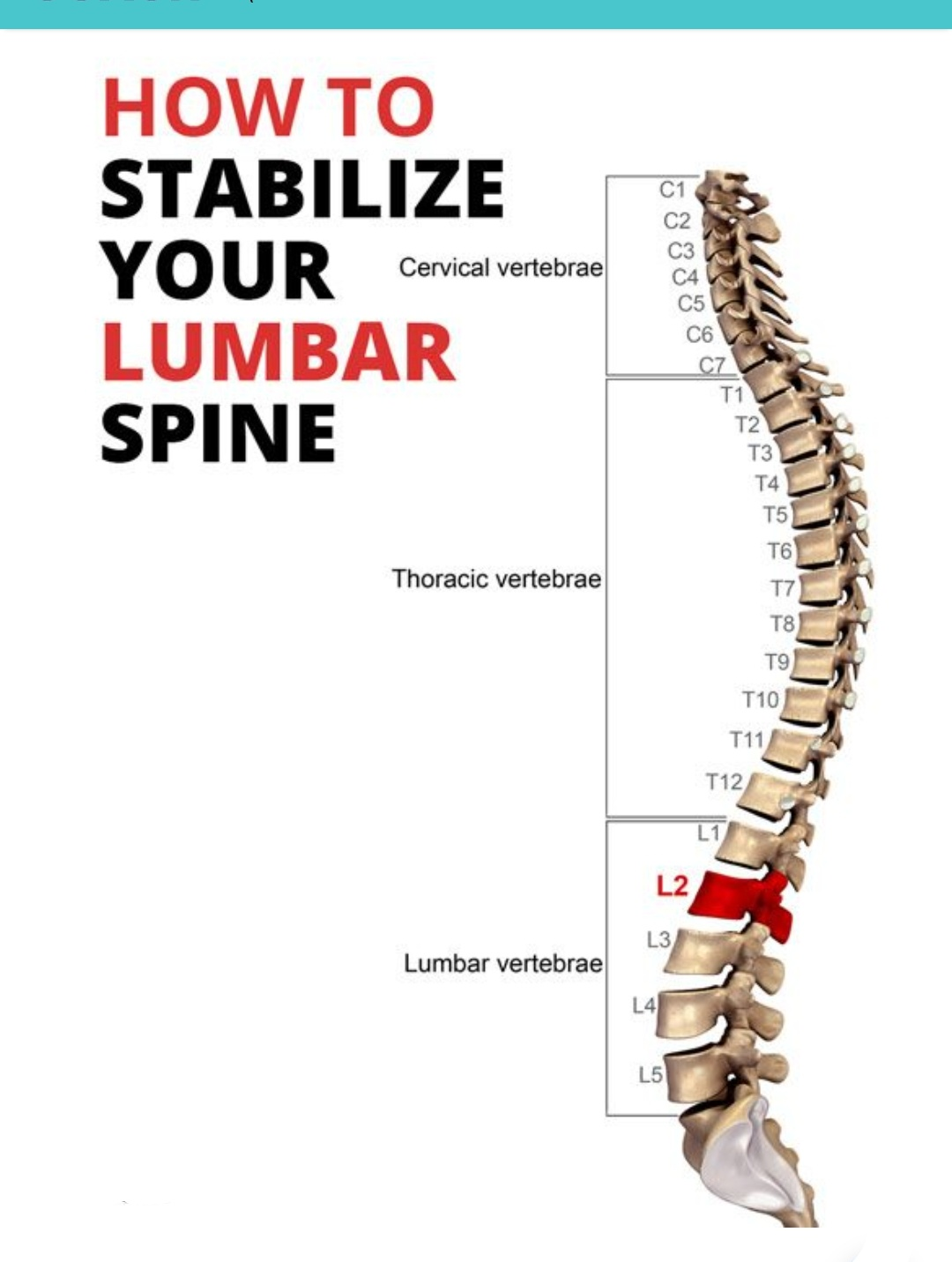
2023-07-18T15:21:07
Physiotherapy clinic in Tambaram Are you Looking for Physiotherapy Treatment in Tambaram, Sunshine Super Speciality Physiotherapy Clinic, We Provide Electrotherapy, Exercise and Manual Therapy, Orthopedic, Neuro, Cardio, Pediatric, Sports and Geriatric Rehabilitation, Post Operative Physiotherapy Treatment, Fracture Rehabilitation, pain free movement. Lumbar Spine Stabilization: Exercises and Posture 2.0K SHARES This post includes the best exercises to stabilize the spine and additional tips to reduce the pressure on the spine when sitting. Stabilizing your spine will help you get relief from lower back pain and sciatica and keep your spine healthy. Spinal stabilization also reduces the risk of injury during exercises and nerve compression, which can lead to symptoms such as sciatica and chronic lower back pain. If you also suffer from a bulging disc, or even arthritis, you’ll benefit from practicing the spinal stabilization exercises below. They’ve helped me personally in managing my symptoms and healing from an L5/S1 disc herniation. lumbar-spine-stabilization Lumbar Spine Anatomy The lumbar spine comprises 5 vertebrae (L1-L5). The lumbar vertebrae produce lordosis, the inward curve (1) lumbar-spine-stabilization lumbar-spine-anatomy Bonus: 10 Transverse Abdominis Exercises PDF CLICK TO DOWNLOAD The exercises below are focused on activating the transverse abdominis, which is a deep core muscle meant to protect and stabilize the spine. strengthen weak core Spinal Stabilization Exercises Core Brace with Diaphragmatic Breathing Core strengthening exercises for back pain Breathing into your core will engage your core muscles, and adding the brace activates the deeper core muscles: the transverse abdominis and multifidus. Diaphragmatic breathing is the right way to breathe and helps keep your core muscles engaged. Breathe normally into your belly and contract your core muscles while breathing. Don’t hold your breath. And, don’t suck your belly in. You’re actually going to feel your belly expanding but the contraction should keep the area hard. Imagine as if you’re about to get punched in the stomach. Your immediate reaction would be to tighten up your belly, right? That’s what we’re looking for here. Toe taps All spinal stabilization exercises should be done with your back touching the mat at all times. Avoid arching your lower back. If you notice your back arching and hips rolling forward to compensate, pause the exercise and resume when you feel ready. alternating-toe-taps Keep your core engaged and bring your lower abdominals in. Raise both legs up into a 90-degree position. Lower one leg down, tap the floor with your toes, raise your leg and repeat with the other leg. Keep alternating. As you lower the leg, keep your lower back from overarching. Knee folds pelvic stabilization knee fold This is one of the best pelvic stability exercises. Pull your lower abdominals in and tighten your core. Focus on contracting the lower area of your pelvis. The mind-muscle connection is important in this exercise. Raise your leg up into a 90-degree position. Keep your back stable as you do this. Lower your leg and raise the other leg. Keep that contraction in the lower abs-pelvic area. Focus on keeping your core engaged and breathing deeply. Bird-dog The bird dog exercise is my go-to core activation exercise to stabilize the spine. The most important thing is to imagine you have a cup of water on your back and trying to keep your back as stable as possible to keep the cup from falling. Raise your leg, engage the glutes and reach out with your arm. Keep your back strong and stable. You’ll have no choice but to work the glutes to stabilize you. Plank with Posterior Pelvic Tilt When performing the plank exercise, bring your lower abs in and focus on forming a straight line from your head to your heels. Avoid overarching your back. You should feel your abs and core working hard to stabilize your body. Toe Tap with Arm Extension Toe taps with arm reach To increase the intensity of the toe tap exercise, get into the same position. Instead of tapping your toes, lower your leg and stretch both your leg and the opposite arm. This is an advanced version. Transition to this variation after mastering the toe taps exercise. It’s normal to start shaking. But never sacrifice form. Perform 10 alternating repetitions. How to Stabilize Your Spine Sitting I have a full blog post to help you reduce hip and lower back pain sitting, and one of my favorite ways to stabilize my lumbar spine area is using a lumbar support, which can be a rolled blanket. If you also get piriformis pain from sciatica, sit on a thick pillow or a folded blanket to elevate your hips. lumbar-and-hip-support I also perform diaphragmatic breathing sitting, which helps realign my posture. Many times when we’re working at our desks, we start breathing from our chest and shrugging our shoulders. Tuning back into your breath will relax the nervous system and help you reset your posture, and get you back into proper breathing. I think that working on stabilizing your lumbar spine is one of the most beneficial things you can do to achieve long-term relief. My program Back Pain Control contains a 6-week plan focused on spinal and pelvic stabilization. SUNSHINE ® SUPER SPECIALITY PHYSIOTHERAPY CLINIC - #DrParthiban #Sunshinephysioclinic.in #Physiotherapyclinicintambaram DR.M.P. PARTHIBAN.M.P.T (Ortho), Chief Orthopedic Physiotherapist, Call for Appointments: - 9345122177 East Tambaram, CHENNAI

